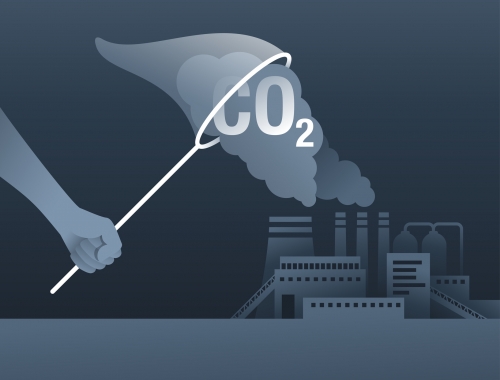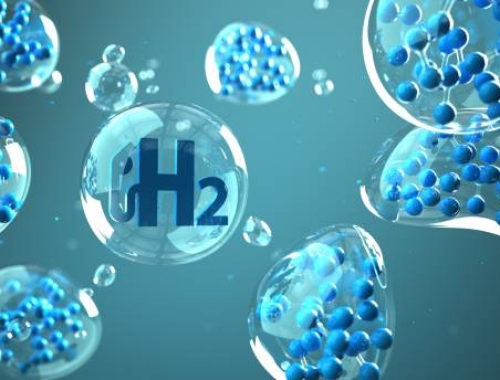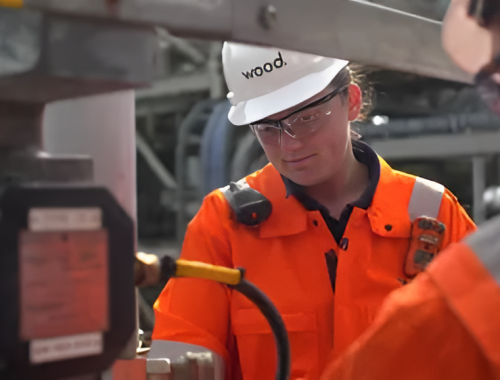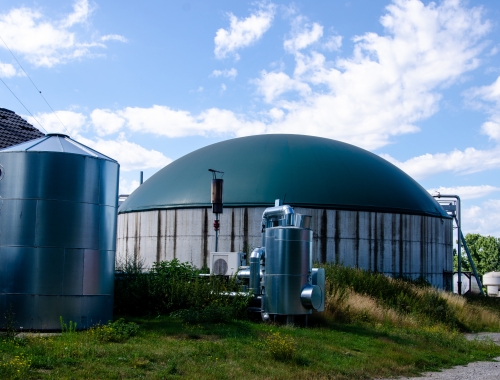Japan’s synthetic methane push opens up CCS opportunities
SUMMARY
But stronger incentives and policy push will be needed to realise Tokyo’s long-term ambitions.
By Shi WeijunJapan’s nascent push to decarbonise its consumption of natural gas by replacing it with a synthetic alternative could open up a major opportunity for Tokyo to make carbon capture and storage (CCS) a key driver in the Japanese journey towards net-zero. But stronger incentives and policy push will be needed to realise Tokyo’s long-term ambitions.
Japanese companies including Tokyo Gas, the country’s top city gas supplier and one of its biggest LNG importers, are exploring the production of synthetic methane. Known as an electrofuel, synthetic methane is a low-carbon or carbon-neutral alternative to traditional natural gas that is produced from CO₂ and green hydrogen via a chemical reaction called methanation.
Synthetic methane is attractive for Japan because it can make use of the country’s extensive existing gas infrastructure that includes dozens of LNG import terminals, LNG carriers and city gas facilities. The Japanese government is positioning methanation as a growth industry and one of the key ways for Japan to achieve its stated target of net-zero emissions by 2050.
The ministry of economy, trade and industry (METI) wants synthetic methane to replace 1% of city gas volumes by 2030, rising to 90% by the net-zero deadline year of 2050. A complete shift to synthetic methane for all domestic city gas consumption would cut Japan’s CO2 emissions by around 10%.
Japan intends for hydrogen to be produced via renewable electricity while CO2 will be sourced from power plants and factories, or direct air capture. This is where the CCS industry has a major role to play, as the supply of CO2 will be essential for large-scale methanation. CCS deployment would support other gas-adjacent sectors in Japan, for example by extending the longevity of gas-fired power generation in an increasingly low-carbon energy mix and leveraging Japanese shipbuilding expertise.
Long-term roadmap
Tokyo has set ambitious targets and deployment plans for CCS both domestically and abroad, and companies have announced large-scale projects that could make Japan a major CCS market.
In March METI finalised Japan’s Long-term CCS Roadmap, which outlined how the country will grow its fledgling CCS industry. The roadmap set a target to commercialise CCS projects with a combined capture capacity of 6-12mn tonnes/year of CO2 equivalent by 2030.
This represented an aggressive target since Japan presently only has 0.1mn t/yr of capture capacity with its first large-scale CCS pilot project at a grey hydrogen plant in Tomakomai city of Hokkaido, which had captured just 300,000 t as of November 2019. That said, in June, METI selected seven large-scale CCS projects that have a combined capacity of 13mn mt/yr. Five will be in Japan, and the remaining two in Malaysia and the Oceania, and their development means the roadmap’s 2030 capture target is in play.
The Malaysian project stands out as it counts the involvement of TotalEnergies and Petronas alongside Mitsui. In late September METI head Yasutoshi Nishimura held talks with executives from Petronas that Japanese media reported will pave the way for an agreement over the operation of the project between METI, Petronas and the Japan Organisation for Metals and Energy Security.
The proposed project will capture 2mn t/yr of emissions from chemical plants and oil refineries in the western and Kyushu regions in Japan, and store them offshore Malaysia when it launches in 2028.
To achieve the 2030 target, Tokyo will fund feasibility studies for the seven CCS projects selected in June to reach a final investment decision by 2026 and to start operations by 2030.
Considerably more challenging is the roadmap’s long-term target of 120-240mn t/yr of capture capacity by 2050. METI has set a high bar as the upper end of the target range amounts to more than one-fifth of the 1.12bn t emitted by Japan in the 12 months up to March 2022.
Achieving the target will be difficult without additional policy support. Fiscal support from the government lags other major CCS markets such as the US and the UK, but higher subsidies and carbon prices could help Japan boost its capture capacity after 2030 to meet its 2050 target.
CCS could be a key technology for decarbonising Japan’s power and industry sectors, which emitted a combined 646mn t of CO2 or 61% of total emissions in 2021, according to the National Institute for Environmental Studies in Japan. Equipping coal- and gas-fired power plants with CCS for emissions abatement would be cheaper than fuelling them with hydrogen, as Japan’s renewables-unfriendly geography makes domestic clean hydrogen production as well as clean hydrogen imports more expensive than other markets such as Australia.
Considerable storage potential
Japan has plenty of carbon storage potential despite limited land availability. As much as 236bn t of CO2 storage capacity is available, although mostly in offshore locations, according to 2D seismic surveys conducted in 2005 and 2012. In 2014, Tokyo began more precise 3D seismic surveys and has so far confirmed 16bn t of CO2 storage capacity in 11 locations, which is enough to store about 15 years of Japan’s entire annual carbon emissions.
These activities are fully funded by the government, which spent 550mn yen ($3.7mn) on seismic surveys in the year ending March 2023. In order to tap Japan’s offshore storage potential, the country would need large-scale liquefied CO2 (LCO2) carriers to transport captured carbon to storage sites.
Exploration and studies for onshore storage and depleted oil and gas fields in Japan have not been conducted extensively, but recent academic studies on the storage potential of spent fields in Niigata prefecture – one of the few regions in Japan with fossil fuel production – have shown there could be up to 402mn t of CO2 of storage capacity. This is only a minor fraction of Japan’s total storage potential but enough for large-scale CCS projects.
One major advantage that Japan holds is the presence of leading domestic players in CCS technology. Mitsubishi Heavy Industries (MHI) has pioneered and led global development of liquid absorption carbon capture technology. MHI developed its proprietary carbon capture technology with Kansai Electric Power in the 1990s, and their trademarked Kansai Mitsubishi Carbon Dioxide Recovery Process and amine solvent has been delivered to 18 commercial projects worldwide – 14 of which are currently operational.
MHI’s technology can be applied to various emission sources including methanol production, fertiliser production and power generation. The technology is used for bioenergy with CCS projects as well as the compact carbon capture system used at a 7-MW biomass power plant in Hiroshima commissioned last year.
Japan can also leverage its shipbuilding industry to deliver LCO2 carriers for CCS projects. Japan is the third-largest shipbuilder in the world after China and South Korea with a 17% market share by gross tonnage in 2022, according to United Nations statistics.
Mitsubishi Shipbuilding, a subsidiary of MHI and one of Japan’s major shipbuilders, held a launch ceremony in late March for an LCO2 carrier with a capacity of 1,450 m³. The 72m-long carrier is being developed as a Japanese government-funded demonstration test ship, with completion and handover scheduled sometime in the next several months – upon which it will likely be the world’s first LCO2 carrier in operation.
For large-scale LCO2 ships, Mitsubishi Shipbuilding has partnered with Nihon Shipyard, a joint venture between Imabari Shipbuilding and Japan Marine United Corporation, to complete construction of large-scale LCO2 carriers by 2027. Mitsubishi has also partnered with TotalEnergies for feasibility studies on LCO2 transport.
Japanese shipping companies are emerging as early frontrunners in the operation of LCO2 carriers too. Kawasaki Kisen Kaisha (K Line) has secured long-term contracts for managing two 7,500 m³-capacity LCO2 carriers for the Northern Lights project in Norway, which is scheduled to start up next year. Experience from this project can help K Line contribute to Japan’s CCS projects.
Tougher policies needed
Japan was the first country in Asia to impose a carbon tax on fossil fuel emitters in 2012, but the levy has remained unchanged in the past 11 years at 289 yen/t – insufficient to encourage industries to invest in CCS. Some hard-to-abate sectors such as steel and cement are also exempt from this tax. And although Tokyo has proposed a new Green Transformation Surcharge on emissions from 2028, it will only apply to gas and electric utilities and trading houses.
In the absence of a strong carbon pricing policy, emissions-intensive sectors will need to be cajoled into implementing CCS. In the power sector for instance, Japan has an efficiency target for coal plants that is too weak to phase out coal or compel fleet owners to retrofit coal plants with CCS.
The government introduced a coal power efficiency standard in 2021 that directs each power generator to ensure their coal-fired fleets meet a fleet-wide efficiency standard of 43% by 2030. This can be achieved by retiring inefficient coal plants, co-firing with ammonia or biomass, or reduce the utilisation hours of less efficient plants.








